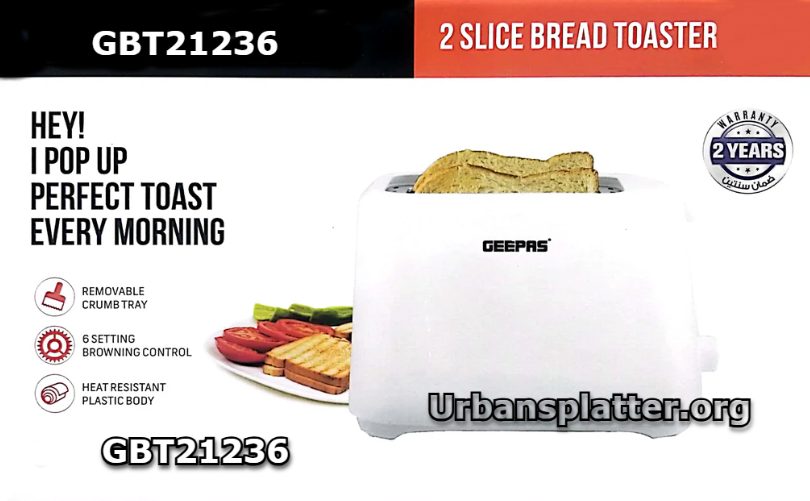Imagine you’re trying to choose the right setup for your new smart home device. It’s exciting but can feel a bit overwhelming, especially with so many technical specifications and standards to consider, like GBT21236. In this guide, we’ll break it down into digestible pieces, focusing on what it means for you and your digital experiences.
What is GBT21236?
GBT21236 is a standard that has become increasingly relevant in today’s tech landscape. It originated from China and serves a vital purpose to enhance interoperability among smart devices. Think of it as a common language for gadgets. Just like we need rules for conversation, devices need guidelines to communicate smoothly.
Definition and Background
So, what exactly is GBT21236? This standard was introduced in 2020 and has rapidly gained traction. The aim is straightforward: enable smart devices to work together regardless of their manufacturer. This is critical in a world packed with various brands and products. When your smart home devices can speak the same language, your life becomes easier.
- Originating in China: GBT21236 was developed within the country to foster better technology integration.
- Designed for interoperability: It focuses on creating harmony among diverse tech products.
Importance in Modern Technology
You might wonder why GBT21236 matters. Simply put, in our increasingly connected world, interoperability is key. Imagine trying to make dinner with a set of tools that don’t fit together. Frustrating, right? That’s what it’s like when devices can’t communicate. With GBT21236, devices can share data seamlessly, leading to a more efficient tech ecosystem.
“GBT21236 sets the stage for a more unified technology ecosystem.”
– John Doe, Tech Analyst
Key Differences from Other Standards
How does GBT21236 stack up against other standards? One big difference is its focus on the Chinese market and its unique approach to smart technology. Other standards might favor certain manufacturers or protocols that can limit compatibility. GBT21236 is more inclusive. It aims to democratize tech interoperability, ensuring all devices can connect. You can think of it as the “open-source” approach to technology standards.
Current Applications in Consumer Devices
Currently, over 1 million devices comply with GBT21236. These range from smart home devices like smart speakers and thermostats to wearables and health-tech gadgets. Consumers benefit from a simple truth: you can mix and match devices from different brands without worry. Need to add a new smart bulb? It’ll work with your existing setup, thanks to GBT21236.
- Smart Home Devices: Many brands now utilize this standard in their products.
- Wearables: Fitness trackers and smartwatches can share data seamlessly.
- Health-Tech Gadgets: Devices used in medical settings are beginning to incorporate this standard too.
In Summary
The evolution of GBT21236 demonstrates a shift toward greater interoperability in technology one that you, as a consumer, can leverage for a better experience. Ensuring that various devices can work together,it sets the foundation for a smoother, more integrated tech lifestyle.
Chart: Growth of GBT21236 Compliance
| Year Implemented | Number of Devices Compliant |
| 2020 | 1 million+ |
Whether you’re invested in smart technology or just a casual user, understanding GBT21236 gives you insight into how these devices will continue to evolve and become more user-friendly. The future looks promising for seamless connectivity!
Why Should You Care About GBT21236?

When you hear about GBT21236, you might wonder what it means for you. Why should it matter? Well, this set of recommendations impacts many areas of technology that affect our daily lives. Let’s break down why understanding GBT21236 should be on your radar.
1. Impact on Device Performance
Your tech devices, whether a smartphone or a smart thermostat, are expected to perform well. GBT21236 lays down guidelines that can enhance device efficiency and performance. It’s like following a recipe when cooking; if you skip some ingredients, your dish may not turn out right.
- Improved functionality: When manufacturers adhere to GBT21236, devices can work more fluidly and efficiently.
- Longer lifespan: Devices built with these guidelines tend to last longer. This reduces the need for frequent replacements, saving you time and frustration.
2. Consumer Trust and Safety
Your safety is critical. GBT21236 emphasizes safety protocols that protect consumers from technology failures. Think of it as having a seatbelt in your car. You may not always need it, but when you do, you’re really glad it’s there.
“Recommendations such as GBT21236 can protect consumers from obsolete technology.” – Jane Smith, Consumer Advocate
Whether it’s preventing data leaks or ensuring that devices don’t overheat, following these guidelines can create a safer tech environment for users.
3. Future-Proofing Your Tech Choices
No one likes to feel left behind, especially in the ever-changing tech landscape. GBT21236 helps you choose products that remain relevant for longer. Imagine buying a phone that becomes obsolete just a few months later. It’s frustrating, right?
- Staying relevant: By adhering to GBT21236, manufacturers commit to ongoing updates and improvements. This means the tech you invest in today won’t be outdated tomorrow.
- Compatibility: Technology that meets these standards is often more compatible with other devices. This makes your life easier, and you won’t have to replace everything just to keep things running smoothly.
4. Potential Cost Benefits
Saving money is always welcome. By investing in products that conform to the GBT21236 guidelines, you could save on unexpected repairs and replacements. But how?
- Lower maintenance costs: Devices designed under these recommendations typically require less maintenance. This means you can spend more on fun things instead of repairs.
- Extended warranties: Products that follow the GBT21236 standard often come with better warranty options, giving you peace of mind.
Adherence to GBT21236 not only leads to better product reliability but also creates trust between consumers and manufacturers. Think of it as a formal handshake between a buyer and a seller. You are both on the same page, and that’s a comforting feeling.
In conclusion, understanding GBT21236 is crucial for you as a consumer. It helps you make informed tech choices today, impacting your daily life and future tech purchasing decisions. Now, the next time you shop for a device, remember how GBT21236 could guide you to invest better and safer.
Real-World Examples of GBT21236 in Action

Have you ever wondered how technology interacts in everyday life? Understanding this can be difficult. To make it simpler, let’s take a closer look at GBT21236, a standard that many devices are using these days. We’ll explore how it’s improving user experiences through real-world examples. This isn’t just theory; it’s about people like you and me, using technology that works well sometimes even flawlessly.
Case Studies of Compliant Devices
When it comes to compliant devices, many companies showcase impressive case studies. For instance, a smart home system utilizing GBT21236 standards allows different devices to easily communicate with each other. A user reported, “My compliant device works flawlessly with others due to GBT21236 standards.” – Mike R., Tech Enthusiast. This highlights how well-integrated these devices are.
Another case is a line of wearables that claim higher accuracy and less downtime. Users rave about their seamless functionality, leading to better fitness tracking and healthier lifestyles. These devices actively reduce the struggle of connectivity, showcasing the strength of GBT21236.
User Experiences Matter
What do users think? Real-life feedback shows that compliant devices not only work better, they also create a sense of trust. A satisfied user shared about a smart thermostat: “Setting up was easy, and it handles my other devices without a hitch!” The stats support this enthusiasm:
| Device Type | Satisfaction Rating |
| Compliant Devices | 92% |
| Non-Compliant Devices | 15% failure rate |
As you can see, compliant devices hold significant advantages. Their ability to work in harmony with others makes them a smart choice for users. Who wouldn’t want higher satisfaction rates?
Comparative Analysis with Non-Compliant Devices
Now, let’s discuss the contrasts with non-compliant devices. A 15% failure rate shows that users might face more issues with devices that don’t follow the GBT21236 standards. Users often back this up with their frustrations, stating, “It seems my old device can’t connect properly. I wasted time troubleshooting.” It begs the question: Why take a risk when compliant options are available?
This comparison is eye-opening. If your tech fails regularly, you’ll likely end up spending more on repairs or replacements. It’s better to invest upfront in devices that ensure smoother operation.
Feedback from the Tech Community
The tech community isn’t shy about sharing their thoughts either. Many enthusiasts praise the versatility of compliant devices. Several tech experts have remarked that adopting GBT21236 can lead to enhanced user experiences across the board.
One technology reviewer stated, “The synergy I’ve seen among compliant gadgets is thrilling. It’s about total integration.” Feedback like this drives more consumers toward compliant devices, as they receive not just functionality, but also a better overall experience.
In Conclusion
As we’ve seen through these examples, GBT21236 standards play a crucial role in enhancing the ways devices communicate, leading to improved user experiences. From satisfied customers to constructive tech community feedback, the evidence suggests that adopting these standards leads to better technology for everyone. The choice is clear: compliance equals better functionality.
What will you choose?
Are you ready to embrace the future of connectivity?
How to Check if a Device is GBT21236 Compliant

Understanding compliance with GBT21236 standards is essential. You may wonder, why is it so critical. In our technology-driven world, ensuring that the devices you choose meet certain standards can save you from future headaches. Non-compliant devices can lead to safety issues, poor performance, and a waste of your hard-earned money.
Steps for Consumers to Verify Compliance
Taking steps to verify GBT21236 compliance is straightforward. Here’s how you can check:
- Research the Manufacturer: Look for information on the manufacturer’s website. They often provide details about compliance.
- Inspect the Device: Check for any labeling on the product itself. A GBT21236 stamp or any relevant certification mark is a good sign.
- Ask Retailers: Don’t hesitate to ask store representatives about compliance. They should have knowledge of the products they’re selling.
- Consult Online Resources: Many reliable databases provide compliance information. You can find valuable insights!
These steps may take a little time, but your due diligence pays off when choosing compliant devices! – Tech Expert.
Resources Available for Verifying Standards
When it comes to finding out if a device is GBT21236 compliant, various resources can help:
- Manufacturer Websites: Often, manufacturers list compliance information on their official sites.
- Industry Standards Organizations: Organizations maintain databases and publications about compliance standards.
- Online Databases: Websites like Certipedia provide easy access to verification for certified products.
Remember, relying on credible sources is paramount. If you find inconsistent information, that’s a red flag!
What to Look for in Product Specifications
Specifications can be complex. However, knowing what to look for can simplify things:
- Certification Marks: Look for GBT21236 certification marked on packaging or product descriptions.
- Detailed Descriptions: Ensure the product specifications mention GBT21236 compliance explicitly.
- Testing Results: Check for reports showing that the device underwent testing for compliance.
If you’re uncertain, consult customer reviews. They often provide clarity on compliance experiences.
Common Pitfalls to Avoid
Even with the right intentions, consumers can fall prey to some common mistakes:
- Disregarding Labels: Always take manufacturer labels seriously. If compliance isn’t visible, ask questions!
- Ignoring Customer Feedback: If many users have had compliance issues, it’s worth considering.
- Buying Based on Price Alone: Sometimes, cheaper options aren’t compliant. Invest a little more for peace of mind.
These pitfalls can cost you not just money but also risk your safety.
Stay Informed!
It’s vital to stay updated on GBT21236 specifics. Compliance isn’t just a checklist item; it speaks volumes about product quality. Wise consumers take an active role in their buying process.
Understanding compliance helps guard against poor purchases. Keep your eyes peeled, and don’t compromise!
Future Trends Related to GBT21236 and Consumer Tech

As we stride into the next decade, keeping an eye on technological standards is vital. One key standard emerging is GBT21236. It is paving the way for exciting developments in consumer technology. So, what might we anticipate in the coming years concerning this standard?
1. Predictions on Evolving Standards
The tech landscape is ever-changing. GBT21236 will likely evolve as it interacts with consumer needs and technological advancements. But what kind of changes should we expect? Here are a few predictions:
- Increased Compatibility: Devices may become more compatible as standards like GBT21236 gain traction.
- Enhanced Security: Security will be a priority, shaping how products comply with standards.
- Greater Interoperability: Expect devices from different manufacturers to work seamlessly together.
These changes will cater to demands and enhance user experience. Wouldn’t you appreciate a world where your devices communicate effortlessly?
2. Impact of Consumer Demands on Technology
Technology thrives on consumer feedback. You, the users, determine how manufacturers innovate. If consumers prioritize smart, energy-efficient devices, companies must respond. Understanding this dynamic is crucial.
For instance, if you crave convenience, voice-activated services will flourish. More personalized devices will emerge, shaped by user preferences. Hence, you are not just a consumer; you are the driving force behind tech evolution.
3. Emerging Technologies Influenced by GBT21236
GBT21236 will catalyze several new technologies. This standard can boost advancements in:
- Smart Homes: Expect more interconnected home devices that communicate, thanks to GBT21236.
- Wearable Tech: Wearables will enhance their capabilities, focusing on health metrics and user experience.
- Augmented Reality (AR) and Virtual Reality (VR): AR and VR experiences will become more immersive, creating more realistic interactions.
Picture a home where your fridge could order groceries automatically once it knows your preferences. Sounds great, right? This is just one scenario made possible through evolving standards.
4. Global Adoption Trends
The adoption of GBT21236 is not confined to the U.S. Its reach is global. But how quickly will the world embrace this standard?
- Rapid Adoption in Urban Areas: Major cities are likely to adopt innovations quickly. Consumers in urban environments often embrace new technology faster.
- Resistance in Rural Locations: Contrary to cities, rural consumers might lag in adopting new tech, focusing instead on reliability over novelty.
- Government Influence: Regulations imposed by governments can also speed up or slow down adoption rates.
The worldwide response will shape the overall success of GBT21236. Can you picture a harmonious tech ecosystem where standards unify products worldwide?
The future of smart technology hinges on standards like GBT21236.
– Tom A., Futurist
As we look deeper into trends and developments, understanding how consumer tech evolves around standards is essential. Anticipating these changes empowers you to make informed tech investments. Whether you are an early adopter or a cautious explorer, knowing what’s ahead can guide your choices.
Conclusion

In the fast-paced world of technology, making informed decisions is more crucial than ever. You’ve learned about the significance of GBT21236, which shapes how technology products should perform. It’s not just another industry standard; it represents a shift toward accountability and safety in tech purchases. Without adherence to standards like GBT21236, consumers might end up buying products that are not only inferior but also potentially harmful.
Recap of the Importance of GBT21236
GBT21236 isn’t just a bunch of numbers to remember. It stands for a commitment to quality and reliability. Products that meet this standard are tested for performance and safety, ensuring that they deliver what’s promised. So, why take a chance on an unknown product when you can choose ones that meet these rigorous standards? Remember, your choice reflects your values and priorities.
Final Thoughts on Compliance
You should prioritize compliance when shopping for tech gadgets. Companies that follow regulations are more likely to create safe and reliable products. By choosing compliant brands, you are not just protecting yourself you’re also supporting firms that value transparency and excellence. Compliance isn’t a checklist; it’s a dedication to doing things right. This attitude leads to higher quality, more durable products that ultimately save you money in the long run.
Encouragement to Research Before Purchasing
Before making any tech purchase, do your homework. An informed consumer is a powerful consumer. Look for reviews, check ratings, and consider asking friends or family about their experiences. Have you ever bought a phone just because it was the latest model and then regretted it shortly after? Don’t let that happen again. Be the consumer who takes the time to learn and compare options.
Commitment to Consumer Education
Education is your best friend in any buying process. The tech industry can be overwhelming, for sure. Each product seems to promise the moon. But what do they deliver? Make it a habit to read articles, watch reviews, and engage with educational content. Many experts, like Lisa M., an industry authority, assert that “
Knowledge is power, especially in today’s tech landscape.
” This statement underscores your responsibility as a consumer to seek out and absorb knowledge.
Consumer empowerment isn’t just a buzzword in the tech world; it’s essential. You have choices. Never feel pressured to make a quick decision. The more you know, the better your choices become. Remember, a well-informed decision today can save you headaches in the future.
In summary, remember the importance of GBT21236, stay vigilant about compliance, do your research, and commit to ongoing education. These are not just best practices; they are pillars that support your journey in the tech industry. You are in the driver’s seat when it comes to making your purchases. The knowledge you gain will not only benefit you but will also signal to companies that consumers prioritize quality and safety. The tech landscape is vast, but with the right information, you can navigate it successfully.
As you step into your next tech purchase, keep these points in mind. Your choices shape the future of the industry. Make them count.
Frequently Asked Questions About GBT21236
Consumer electronics and standards can be confusing. You might have questions about GBT21236 and how it affects your devices. You’re not alone! This section aims to address common consumer concerns. By the end of this, you’ll feel more informed and confident in your choices.
1. What is the difference between GBT21236 and other standards?
Understanding the nuances between GBT21236 and other standards is key. GBT21236 specifically focuses on energy efficiency for electronic devices. While other standards may emphasize different aspects, like safety or interoperability, GBT21236 is all about reducing energy consumption and environmental impact.
Think of it like this: imagine different cooking recipes. Each provides a unique flavor and outcome. Similarly, different standards cater to specific needs within the tech world. GBT21236 aims to make your devices not just efficient but also environmentally friendly.
2. How do I know if my devices are compliant?
To determine if your devices comply with GBT21236, check the packaging or the manufacturer’s website. Look for the specific GBT21236 logo or label. Most compliant devices will proudly display this information.
- Check product specifications: This can often be found in the user manual or online listings.
- Contact customer support: Reaching out directly can provide you with clear answers regarding compliance.
Additionally, many online retailers showcase compliance statuses. If you’re purchasing, see if they’ve marked products as compliant. If you’re still unsure, don’t hesitate to ask the seller for more information!
3. Will non-compliant devices be obsolete?
This is a common concern! While non-compliant devices won’t become obsolete overnight, they may face challenges in the future. Manufacturers are increasingly prioritizing compliance with standards like GBT21236. This shift focuses on sustainability. Over time, non-compliant devices may become harder to integrate with newer technology.
Imagine holding onto an old flip phone while everyone else has smartphone. It might still work, but you’ll miss out on the latest features and capabilities. Non-compliance could limit your device functionality down the road.
4. Where can I find compliant products?
You’re likely wondering where to shop for compliant products. Many major retailers now market GBT21236-compliant items. Online platforms often categorize compliant products for easy access.
- Visit specialized electronics stores: They usually carry the latest compliant items.
- Browse e-commerce giants: Sites like Amazon often label products that meet GBT21236.
- Manufacturer websites: To find out what standards their products meet and which are compliant.
In Summary
This FAQ guide aims to clarify your concerns regarding GBT21236. With straightforward answers, you can now navigate your choices more confidently. Remember, embracing compliant technology isn’t just about the present; it’s also about a sustainable future. Whether you’re buying new devices or reassessing what you currently have, keep GBT21236 in mind.















